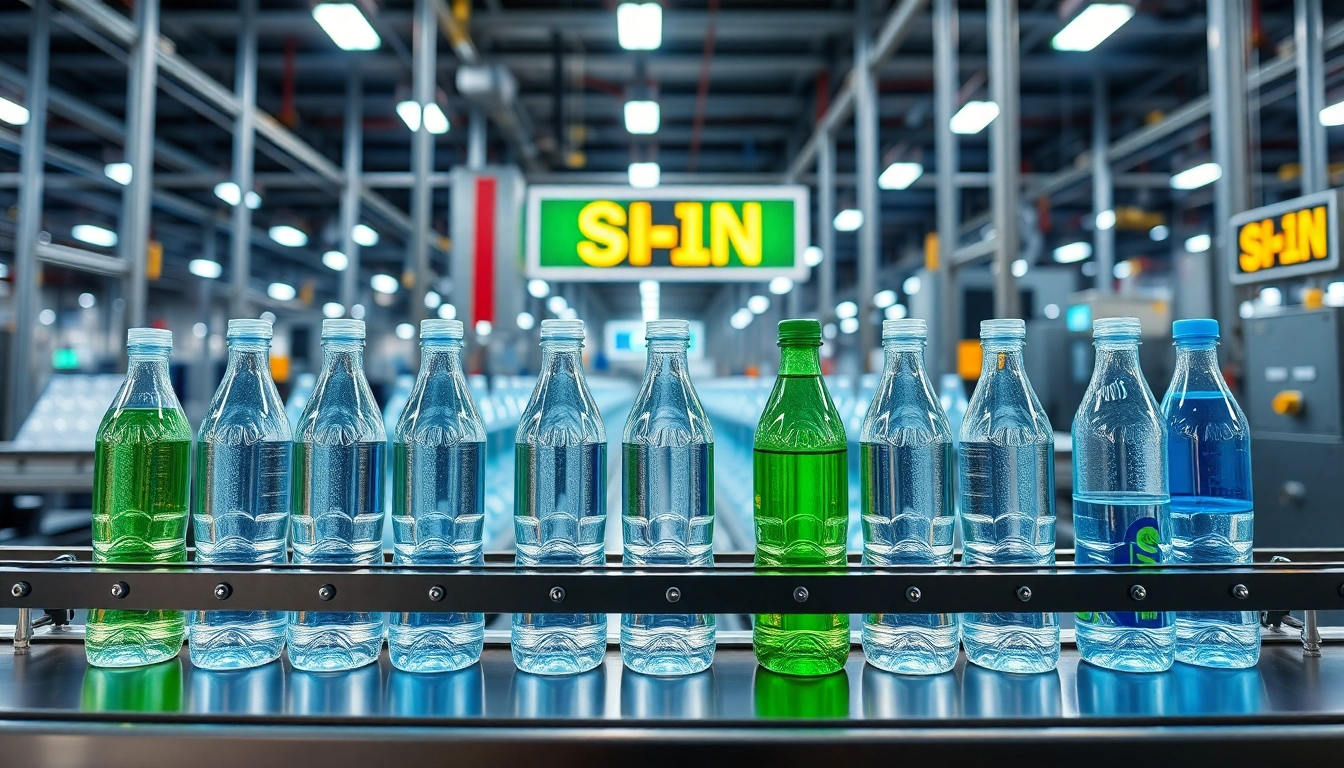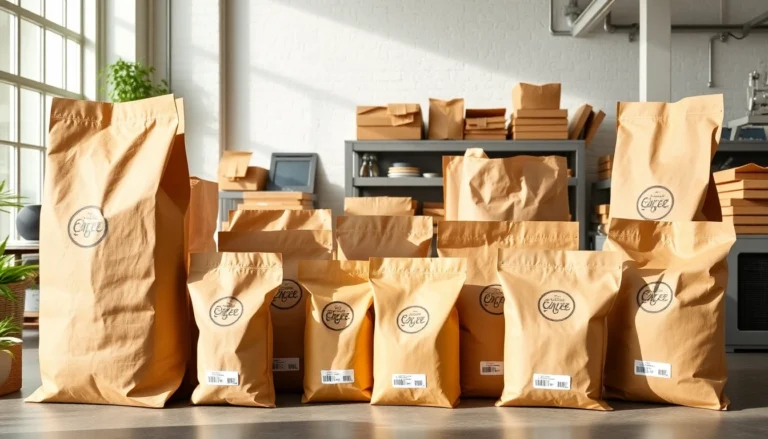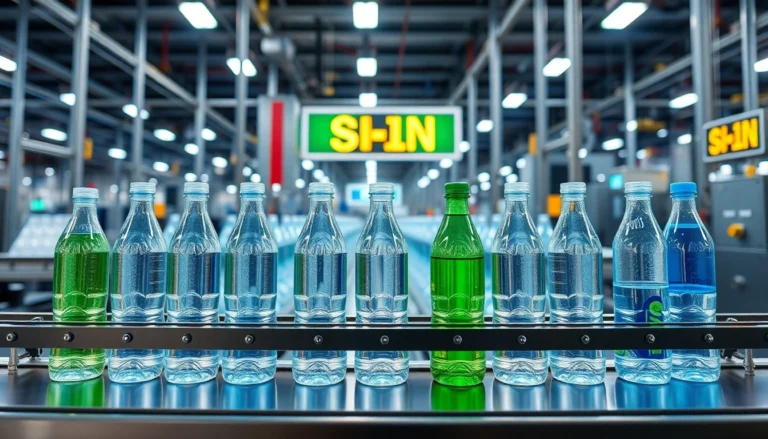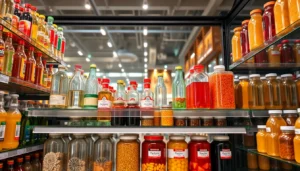Introduction to Plastic Şişe: Types and Applications
Plastic bottles, known locally as plastik şişe, are ubiquitous in nearly all sectors of modern life. Their versatility, lightweight nature, and cost-effectiveness have made them the preferred packaging choice for liquids such as water, beverages, chemicals, and personal care products. Understanding the different types of plastic şişe and their myriad applications provides valuable insights for manufacturers, retailers, and consumers aiming for sustainable and efficient usage.
Understanding Different Plastic Şişe Materials
Plastic şişe are primarily manufactured from various types of polymers, each with unique properties suited to specific applications. The most common material is Polyethylene Terephthalate (PET or PETE), identified by recycling code 1, which is favored for its clarity, strength, and barrier properties. High-Density Polyethylene (HDPE, code 2) is another prevalent material, known for its durability and resistance to impact, typically used for milk jugs and chemical containers.
Other notable plastics include Polypropylene (PP, code 5), recognized for its heat resistance and used in hot-fill applications, and Low-Density Polyethylene (LDPE, code 4), which offers flexibility for squeezable bottles. Each material is selected based on product requirements, durability, and environmental considerations, enabling tailored solutions across industries.
Common Uses Across Industries
Plastic şişe are extensively utilized in the beverage industry for bottled water, sodas, and juices, thanks to their transparency and sterility. The pharmaceutical sector employs specialized bottles for medicines and syrups, where safety and chemical stability are paramount. Additionally, cosmetic and personal care companies rely on plastic şişe for products like shampoos, lotions, and perfumes, benefiting from customizable aesthetics and branding options.
Beyond consumer goods, industries such as agriculture use plastic bottles for fertilizers and pesticides, whereas chemical industries depend on robust, chemical-resistant types for storage and transportation. The adaptability of plastic şişe underscores their importance in modern supply chains and consumer markets globally.
Advantages of Plastic Şişe for Packaging
Plastic şişe offer numerous advantages over traditional packaging options. Their lightweight nature reduces transportation costs and carbon footprint, facilitating eco-friendly logistics. Their durability ensures resistance to breakage, minimizing product loss and safety hazards. The ease of manufacturing allows for high-volume production with consistent quality, enabling cost-effective pricing for end-users.
Furthermore, plastic şişe are highly versatile—their designs can incorporate features like tamper-evident caps, measuring indicants, and special neck finishes, catering to various functional needs. Their capacity for easy labeling and decoration enhances brand differentiation in competitive markets. These qualities collectively make plastic şişe an indispensable component of modern packaging solutions.
Design and Customization of Plastic Şişe
Innovative Design Features for Marketing
Design plays a critical role in attracting consumers. Modern plastic şişe emphasize ergonomic structures, such as contoured grips and easy-to-open caps, improving user experience. Innovative shapes and sizes are tailored to fit specific product categories, from slim pockets for travel-sized items to large multipurpose bottles.
Advanced manufacturing techniques allow for textured surfaces, embossing, and embossments that support tactile marketing. Incorporating translucent or opaque finishes provides options for product concealment or presentation. These features serve not just aesthetic purposes but also facilitate brand recognition and consumer interaction.
Labeling and Branding Options
Flexible labeling methods, including pressure-sensitive labels, shrink sleeves, and directly printed labels, enable companies to communicate their brand identity effectively. Custom printing allows for vivid colors, detailed graphics, and security features such as holograms, reducing counterfeiting risks. Strategic placement of labels and branding elements boosts visibility on retail shelves, encouraging consumer trust and loyalty.
Additionally, eco-friendly labeling options with biodegradable or recyclable materials reinforce sustainability commitments, appealing to environmentally conscious buyers.
Eco-Friendly and Reusable Models
Growing environmental awareness has spurred innovation in creating reusable and eco-friendly plastic şişe. Brands are now designing bottles with durability and easy cleaning in mind, promoting reuse and reducing waste. Some models employ biodegradable plastics or incorporate recycled content, supporting circular economy principles.
Furthermore, refillable bottles with specialized caps and accessories foster sustainable practices in both retail and personal settings. Implementing a reuse strategy not only benefits the environment but can also serve as a unique selling point to eco-conscious consumers.
Manufacturing and Quality Standards
Choosing Reliable Suppliers for Plastic Şişe
In manufacturing, selecting suppliers with proven expertise and certifications such as ISO 9001, ISO 14001, and FDA compliance is crucial to ensure product safety and quality. Reliable suppliers adhere to strict raw material controls and process standards, minimizing defects and variances. Conducting thorough supplier audits and requesting sample approval are recommended steps to ensure compliance with specifications.
Quality Control and Certifications
Quality assurance involves rigorous inspections during various production stages, including raw material evaluation, in-process checks, and final product testing. Certifications such as BPA-free status, food-grade certification, and chemical compliance confirm that plastic şişe meet health and safety standards. Employing Third-Party Testing Labs further enhances credibility and assures stakeholders of product integrity.
Sustainability and Recycling Practices
Sustainable manufacturing practices, such as minimizing waste, optimizing energy efficiency, and utilizing recycled materials, are increasingly vital. Incorporating circular economy principles involves designing bottles for easy recycling, clearly marking recycling codes, and collaborating with recycling facilities. Brands committed to eco-friendly practices often promote their sustainability efforts as part of their marketing strategy, contributing to brand loyalty and regulatory compliance.
Cost, Bulk Purchasing, and Lead Times
Pricing Strategies for Bulk Orders
Bulk purchasing of plastic şişe significantly reduces unit costs and improves profit margins. Negotiating volume discounts, long-term contracts, and early payment terms can secure favorable pricing. For OEM or custom-designed bottles, price calculations often include mold costs, design complexity, and raw material variance. Establishing transparent cost structures helps in accurate budget planning and competitive pricing.
Delivery and Lead Time Management
Efficient supply chain management ensures timely delivery. Factors impacting lead times include production capacity, raw material availability, and shipping logistics. Building strong relationships with suppliers and maintaining safety stock levels mitigate potential delays. Using real-time tracking and communication platforms improves transparency and responsiveness, essential for agile market responses.
Negotiating with Suppliers for Better Deals
Effective negotiation strategies involve understanding market prices, demonstrating purchase volume potential, and fostering collaborative relationships. Building long-term partnerships facilitates better terms, priority in production schedules, and access to product innovations. Regular market surveys and competitive bidding can also enhance bargaining power.
Environmental Impact and Recycling of Plastic Şişe
Recycling Codes and Responsible Disposal
Recycling codes, typically numbered 1 through 7 within the recycling triangle, help identify plastic types for proper sorting. PET (1) is highly recyclable and commonly processed into new bottles or fibers. Proper disposal combined with public awareness campaigns can dramatically improve recycling rates. Implementing deposit-return schemes and encouraging consumers to participate actively contribute to responsible disposal.
Reducing Plastic Waste in Business Operations
Businesses can minimize plastic waste through strategies such as adopting reusable packaging, optimizing product design for minimal material use, and integrating take-back programs. Employee training and consumer education about recycling practices enhance overall waste management efficiency. Transitioning to biodegradable plastics further diminishes environmental impact.
Future Trends in Eco-Friendly Packaging
The future of plastic şişe involves innovations like bioplastics derived from renewable biomass, smart packaging with embedded sensors, and fully recyclable multi-materials. These advancements aim to balance product performance with minimal ecological footprint. Governments and industry standards are increasingly promoting policies that incentivize sustainability, shaping a new era in packaging innovation.







